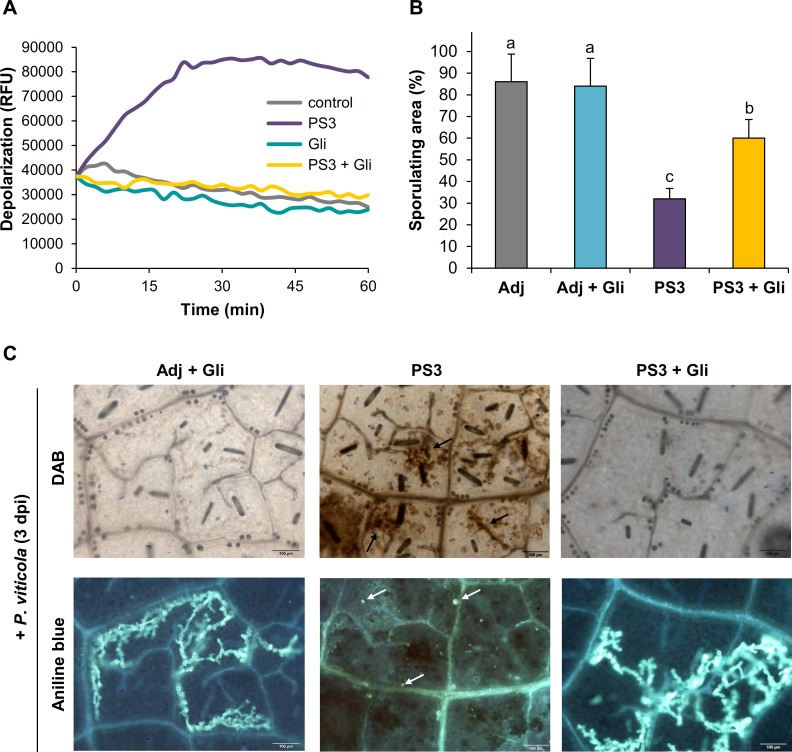The Adj + Gli panel in Fig 5C incorrectly appears as a duplicate of the Adj + DPI panel in Figure 4D. This error arose during the construction of Fig 5. Please see the corrected Fig 5 here.
Fig 5. Plasma membrane depolarization mediates the primed ROS production during the PS3-IR to P. viticola.
A. The anionic channels inhibitor glibenclamide (Gli, 200 μM) blocked the plasma membrane depolarization triggered by PS3 in grapevine cell suspensions revealed by the DIBAC4 probe fluorescence. B. Sporulating areas indicate that Gli blocked the PS3-IR to P. viticola in grapevine leaf discs. Leaf discs were treated during 24 h with Gli (200 μM), washed and then treated with 2.5 g l−1 PS3 during 24 h, washed and, finally inoculated with P. viticola. Leaf sporulating area evaluated at 8 dpi. Different letters indicate statistically significant differences (P<0.05; ANOVA followed by LSD test). Data are representative of three independent experiments (n = 3). C. Microscopic analyses on the same grapevine leaf discs show that Gli inhibits the primed H2O2 production (black arrows) and callose deposition (white arrows) during PS3-IR, leading to P. viticola spreading. Aniline blue and DAB staining were realized to detect callose and H2O2, respectively. Pictures are representative of three independent experiments. Bar = 100 μm.
Reference
- 1.Gauthier A, Trouvelot S, Kelloniemi J, Frettinger P, Wendehenne D, Daire X, et al. (2014) The Sulfated Laminarin Triggers a Stress Transcriptome before Priming the SA- and ROS-Dependent Defenses during Grapevine's Induced Resistance against Plasmopara viticola. PLoS ONE 9(2): e88145 https://doi.org/10.1371/journal.pone.0088145 [DOI] [PMC free article] [PubMed] [Google Scholar]



